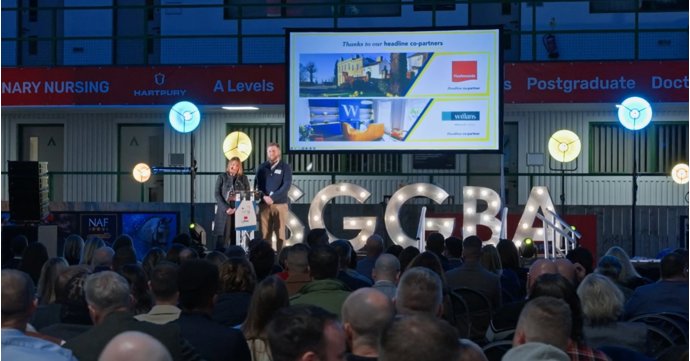With the majority of the UK’s 50 biggest employers planning to adopt a mix of office and home-based working from now on, hybrid working is here to stay for many.
For those responsible for delivering training, not having staff teams in one place at the same time might seem like an unsurmountable challenge, but Gloucestershire-based online learning and training experts, Nimble Elearning, believes it presents an opportunity – and the solution could be step forward for your business.
We spoke to the Stonehouse-based company to find out more.
What is blended learning?
The term has evolved from meaning a straightforward combination of live classroom sessions and online courses to encompassing a great many ways of delivering and experiencing learning.
For example, it might include or combine prerecorded video; microlearning; coaching; mentoring; elearning; classroom training; discussion forums; serious games; virtual classrooms; performance support materials; and even virtual reality.
What are the benefits of blended learning?
Blended learning provides flexibility; cost effectiveness (particularly for small groups); availability of learning when it’s needed; and it’s designed with collaboration in mind.
If your major focus is on an elearning offering, taking a blended approach also has many advantages. Adding social elements – such as group discussions, online chat in dedicated channels, mentoring, or collaborative document editing – gives employees the opportunity to apply what they’ve learned. Providing reference materials will reinforce that learning as they go about their day-to-day role, too.
Taking the leap into blended learning can also be a key step towards building a learning culture in your organisation, particularly if you keep a sharp focus on resources for learning that are available at employees’ fingertips, as and when they need them.
Can blended learning work for a small business with a small budget?
You can harness the potential of blended learning without an enormous learning and development budget, specialist tools or coding experience.
Fundamentally, the power of blended learning is the notion that you choose the method of accessing learning that is most relevant for the content, rather than automatically presenting information in a single format.
How can businesses get started with blended learning?
You don’t need to build an all-singing, all-dancing programme. Start simply and always keep your learning aims at the heart of your plans.
We recommend breaking down the learning before you start planning. What are the performance objectives for the learner and organisational benefits? Be crystal clear about what you’re hoping to achieve.
Identifying the best assessment technique for each of these objectives, as this will inform how you could deliver the content. Fact-based knowledge can probably be assessed in an elearning course, but leadership skills are hard to determine from a multiple-choice quiz.
Work out how much collaboration is required between learners. Why bring people together at the same time if they could have just watched a video at their own convenience and had the same experience?
And think carefully about where people will be using these skills. We apply skills and knowledge best when learning takes place in an environment as similar as possible to the real-life situation in which we use it.
Customer service skills in retail are probably best taught face-to-face if possible, but it makes sense to learn how to use a new web design platform at your desk.
Are there any potential downsides to blended learning?
Like any new venture, blended learning can be difficult to get right. Don’t overcomplicate matters. Keep everything you include in the programme relevant and important. You need the ability to see the big picture: how do all the pieces of the puzzle fit together to achieve learning?
One common mistake can stem from enthusiasm for a certain piece of technology. It’s understandable that you’ll want to get the most value from any tools you have access to, but this can result in the focus shifting from the learning to the method.
Another issue can lie in the perceptions of others. When we use the term ‘blended learning’, others may assume that we mean a combination of live face-to-face sessions and online learning.
Sometimes, this devalues the online component as ‘homework’ that’s perceived as optional, with the classroom training seen as the ‘real learning’.
What’s the main thing businesses can do to make sure the move to blended learning is a success?
Build up slowly and keep it simple, remembering to start by identifying what your outcome should be for learners.
Once you’ve established exactly what needs to be learnt, use the simplest technology that supports your learning objective, beginning with what you already have access to.
For example, you might begin with a short video call to set expectations for the programme, then ask learners to complete an online course built with an intuitive authoring tool like Nimble Author 2, followed by face-to-face or remote group discussions.
Resources could also be available for learners to access in the flow of their daily work, to help them apply and extend their learning, such as short videos, process checklists, simple guides or visual aids. If this sounds a lot like your current approach, then you are already in the blended learning game!
And make sure to consistently reinforce the purpose of the learning, keeping the message consistent – regardless of the method or modality.




















